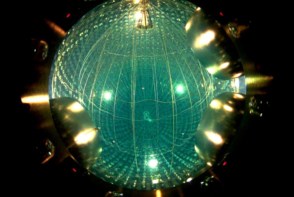Terahertz radiation can be used in applications as diverse as biological imaging and the study of semiconductors. However, beams created so far have been too weak to be used in spectroscopy because the terahertz waves were out of phase - or incoherent. Now Godehard Wüestefeld and colleagues at the BESSY synchrotron radiation source in Berlin have generated a steady-state beam of coherent terahertz radiation for the first time (M Abo-Bakr et al. 2003 Phys. Rev. Lett. 90 094801).
Synchrotron radiation is produced when bunches of charged particles, usually electrons that have been accelerated to close to the speed of light, are forced to move in a circular orbit by strong magnetic fields. The wavelengths produced can range from low-energy far-infrared radiation to high-energy X-rays. Terahertz radiation is found at the low-energy end of the spectrum and corresponds to wavelengths between about 1 mm and 15 microns.
Synchrotron radiation is usually incoherent because the bunches – which contain billions of electrons each – are longer than the wavelengths they are emitting. However, if the bunches could be made much smaller, the electrons would then emit in phase with each other and the radiation would be coherent. The electron bunches in the electron storage ring at BESSY are typically about 5 mm long, which is too long to produce coherent terahertz radiation.
Wüestefeld and co-workers therefore adjusted the magnetic fields in the storage ring to produce a special “low-alpha” mode in which the length of the bunches was comparable with the wavelength of terahertz radiation. The electrons in each bunch now behave as one giant particle and emit a beam of coherent rays.
The BESSY team was able to increase the power of the beam by a factor of 105 when they used low-alpha optics. However, if the intensity is increased by too much the beam can become unstable.



